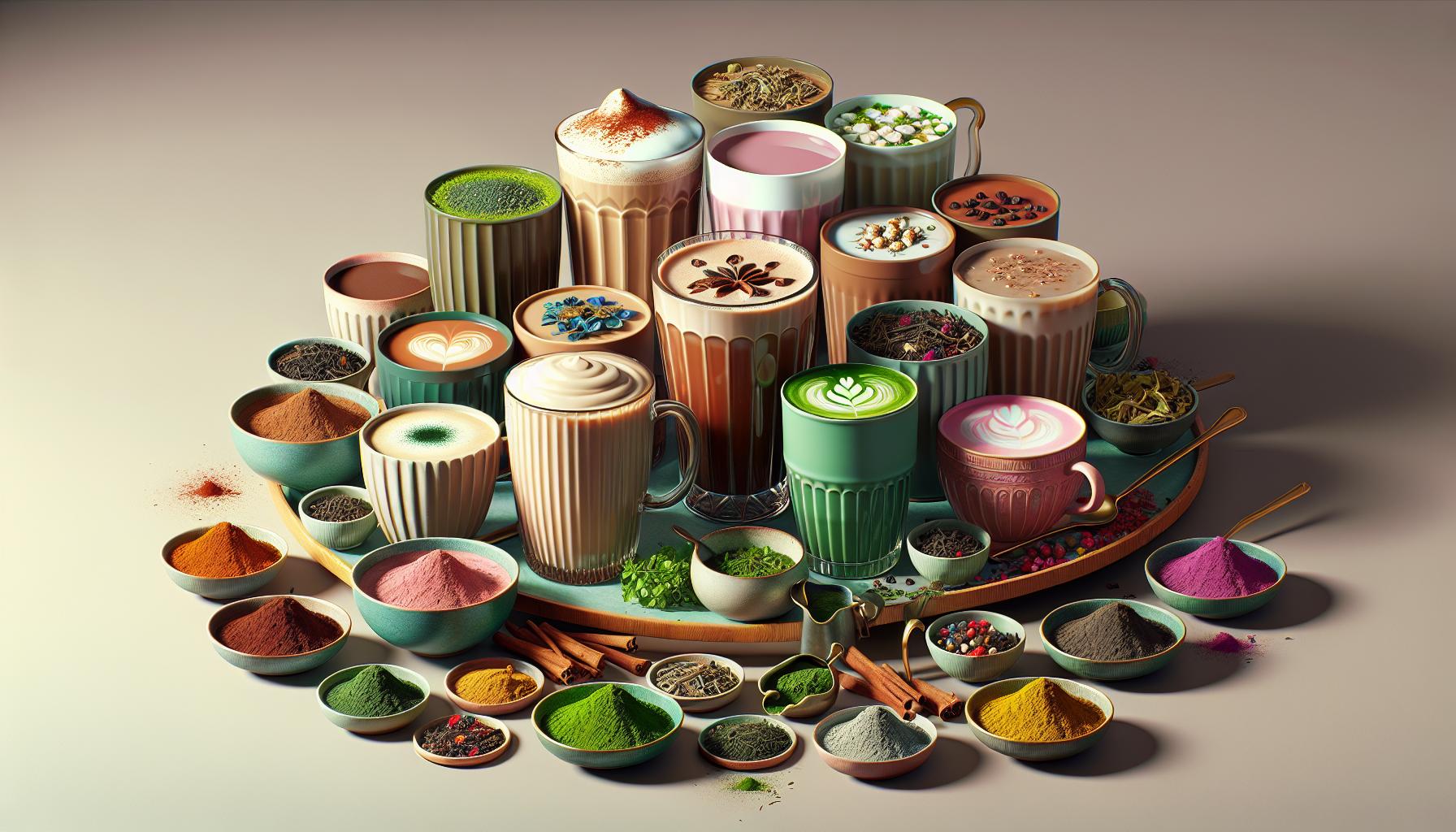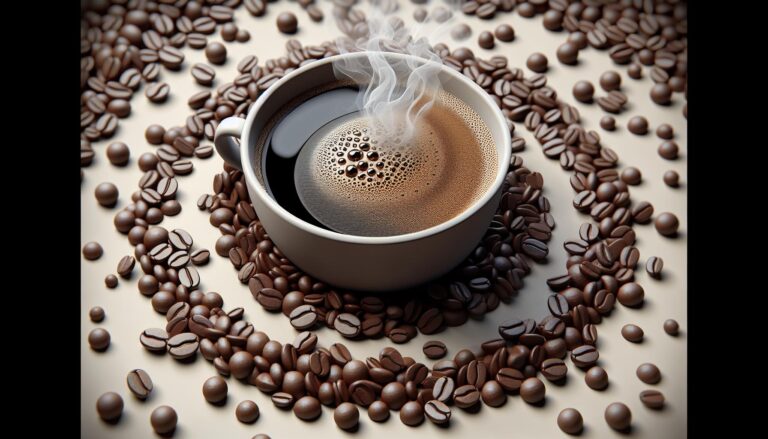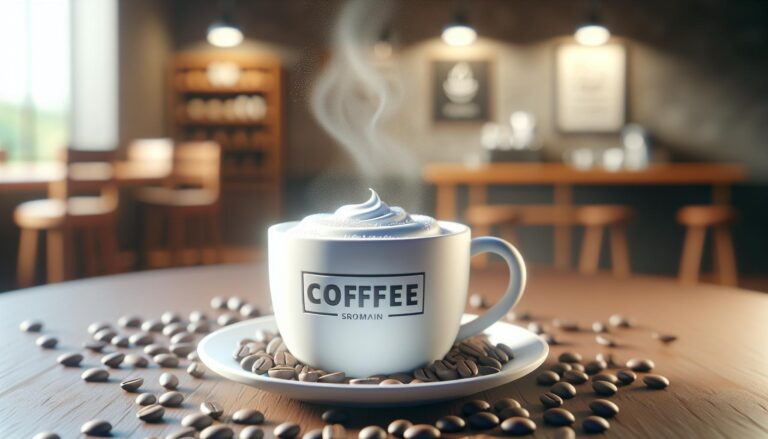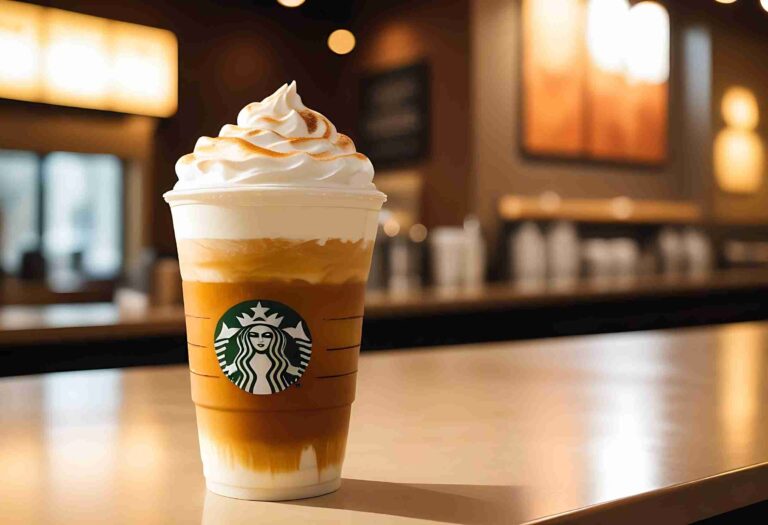Starbucks Tea Latte Caffeine Content: A Comprehensive Guide!
How much caffeine is in the Starbucks Tea Latte? A Starbucks Tall (12 oz) Chai Tea Latte has about 70 mg of caffeine, while a Grande (16 oz) has approximately 95 mg, and a Venti (20 oz) contains around 120 mg of caffeine.
In this article, we will explore the caffeine content of Starbucks Tea Lattes, examining the differences across various sizes and types of tea used in these beverages.
Knowing the amount of caffeine in your tea latte can help you make informed choices to match your caffeine preferences and dietary needs.
Key Takeaways
- Caffeine Content Varies by Tea Type: Starbucks tea lattes like the Chai Tea Latte, Matcha Green Tea Latte, London Fog Tea Latte, and Royal English Breakfast Tea Latte each have different caffeine levels, helping you manage your daily intake.
- Popular Choices with Moderate Caffeine: The Chai Tea Latte and Matcha Green Tea Latte are popular for their robust flavors and moderate caffeine content, while London Fog and Royal English Breakfast offer gentler options.
- Comparison with Coffee-Based Lattes: Tea lattes generally contain less caffeine compared to coffee lattes. For instance, a Grande Chai Tea Latte has about 95 mg of caffeine, whereas a Grande Caffe Latte has around 150 mg.
- Health Benefits and Drawbacks: Moderate caffeine intake can boost focus, physical performance, and antioxidant intake. However, excessive consumption might cause jitteriness, sleep disruption, increased heart rate, and caffeine dependency.
- Customizing Your Tea Latte: You can adjust the caffeine level by choosing different tea bases and altering the number of tea bags or matcha scoops. Flavor enhancements like syrups, milk alternatives, and spices can also tailor the drink to your preference.
Exploring Starbucks Tea Latte Options
Starbucks offers various tea lattes that cater to different tastes. Each option has distinct flavors and caffeine levels.
Types of Tea Lattes at Starbucks
- Chai Tea Latte: Combines black tea with spices like cinnamon and cloves, providing a strong, spiced flavor. It contains approximately 95 mg of caffeine in a grande size.
- Matcha Green Tea Latte: Features Japanese matcha, giving it a vibrant green color and earthy taste. A grande contains about 80 mg of caffeine.
- London Fog Tea Latte: Made with Earl Grey tea, milk, and vanilla syrup. It has a caffeine content of around 40 mg in a grande.
- Royal English Breakfast Tea Latte: Uses black tea with added milk and sweeteners, offering about 40 mg of caffeine in a grande.
Popularity and Preferences
Chai Tea Lattes and Matcha Green Tea Lattes are popular choices for their robust flavors and moderate caffeine content. Some customers prefer the London Fog Tea Latte for a gentler taste and lower caffeine.
The Royal English Breakfast Tea Latte appeals to those who enjoy traditional black tea with a creamy twist. Preferences may vary based on the desired caffeine level and flavor profile.
These options allow you to enjoy different flavors while managing your caffeine intake effectively.
Also Read: Starbucks Iced Matcha Latte Caffeine Content
Caffeine Content in Starbucks Tea Lattes
Starbucks tea lattes offer varying caffeine levels, crucial for managing your daily intake. Popular options include Chai Tea Latte, Matcha Green Tea Latte, London Fog Tea Latte, and Royal English Breakfast Tea Latte.
Comparison with Coffee-Based Lattes
Comparing tea lattes with coffee-based lattes shows significant caffeine differences. A typical Grande Caffe Latte at Starbucks has about 150 mg of caffeine, while a Grande Chai Tea Latte contains around 95 mg.
For a Grande Matcha Green Tea Latte, expect about 80 mg of caffeine. These values indicate that tea lattes generally provide a moderate caffeine boost compared to coffee lattes.
How Caffeine Levels Vary by Tea Type
Caffeine levels in tea lattes differ based on tea type. A Chai Tea Latte, made with a blend of black tea and spices, has about 95 mg of caffeine in a Grande size.
Matcha Green Tea Latte, using finely ground green tea powder, carries roughly 80 mg of caffeine. The London Fog Tea Latte, combining Earl Grey tea and steamed milk, contains about 40 mg.
Finally, the Royal English Breakfast Tea Latte, featuring robust black tea, holds around 40 mg of caffeine in a Grande size. Each tea type offers unique flavors and caffeine contents tailored to different preferences.
Health Benefits and Drawbacks of Tea Latte Caffeine
Tea lattes from Starbucks come with varying caffeine levels. This section delves into both sides of caffeine consumption.
Pros of Moderate Caffeine Consumption
Moderate caffeine intake offers benefits. It can improve focus and alertness, helping you stay productive. Studies show caffeine enhances cognitive function, which can boost learning and memory retention.
- Improved Physical Performance: Moderate caffeine can increase endurance levels, making workouts more effective. It’s often used by athletes for this reason.
- Antioxidant Properties: Many Starbucks tea lattes, like Matcha Green Tea Latte, contain antioxidants that protect cells from damage.
- Reduced Risk of Certain Diseases: Regular moderate caffeine consumption might lower the risks of certain diseases. Research indicates it could reduce the risk of Parkinson’s disease and Alzheimer’s.
Potential Cons of Excessive Caffeine
Too much caffeine can lead to problems. High caffeine consumption can cause jitteriness and anxiety, making it hard to focus.
- Sleep Disruption: Excessive caffeine can interfere with sleep patterns. Avoid drinking caffeinated tea lattes late in the day to ensure better sleep.
- Increased Heart Rate: Consuming too much caffeine can lead to an increased heart rate and possibly palpitations, which could be harmful.
- Dependency and Withdrawal: High intake can lead to caffeine dependency. Skipping your tea latte might result in withdrawal symptoms like headaches or irritability.
Also Read: Starbucks Iced Black Tea Caffeine Content
How to Customize Your Starbucks Tea Latte
Customizing your Starbucks Tea Latte lets you create the perfect drink to match your taste and caffeine preferences. From adjusting caffeine levels to flavor enhancements, you have many options.
Adjusting Caffeine Levels
To control the caffeine content in your tea latte:
- Choose your tea base: Different tea bases have varying caffeine levels. For a lower caffeine option, go with herbal teas like Passion Tango. For more caffeine, choose matcha or chai.
- Adjust the number of tea bags or matcha scoops: Extra tea bags increase caffeine for hot tea lattes. Reduce the number for less caffeine. For matcha lattes, ask for more or fewer scoops.
- Select different milk types: Some milk alternatives, like almond or coconut, contain less caffeine than regular milk, marginally affecting the overall caffeine.
Flavor Enhancements and Substitutions
Enhance or alter the flavor of your Starbucks Tea Latte:
- Syrups and sweeteners: Add flavored syrups, like vanilla or caramel, for a sweet twist. For a healthier option, request sugar-free syrups or less syrup.
- Milk alternatives: Substitute dairy milk with almond, soy, coconut, or oat milk to adjust flavor and creaminess. Each type of milk adds a unique taste.
- Spices and toppings: Cinnamon, nutmeg, or extra foam can provide a delightful touch to your tea latte. Add whipped cream for extra richness.
- Temperature adjustments: Enjoy your tea latte hot, iced, or blended, based on weather or personal preference.
Customizing your Starbucks Tea Latte ensures it fits your flavor and caffeine needs perfectly.
Also Read: Starbucks Iced Green Tea Caffeine Content
Conclusion
Understanding the caffeine content in Starbucks tea lattes allows you to make informed choices that match your energy needs and taste preferences.
With a variety of flavors like Chai, Matcha, London Fog, and Royal English Breakfast, there’s something for everyone.
Customizing your tea latte by adjusting the tea base, number of tea bags or matcha scoops, and milk type ensures you get the perfect balance of flavor and caffeine.
Whether you’re looking for a moderate caffeine boost or a delicious way to enjoy the health benefits of tea, Starbucks offers plenty of options to suit your lifestyle.
Frequently Asked Questions
What are the caffeine content differences between Starbucks tea lattes?
The caffeine content varies with the Chai Tea Latte having around 95 mg, the Matcha Green Tea Latte being around 80 mg, the London Fog Tea Latte is around 40 mg, and the Royal English Breakfast Tea Latte roughly 40 mg of caffeine in a grande size.
Are Starbucks tea lattes healthier than coffee-based lattes?
Starbucks tea lattes generally offer a moderate caffeine boost compared to coffee-based lattes, providing benefits like improved focus and antioxidants, while potentially lowering risks of excessive caffeine intake-related issues such as jitteriness and sleep disruption.
How can I customize my Starbucks tea latte for lower caffeine?
You can customize by choosing a lower caffeine tea base (like London Fog or Royal English Breakfast), reducing the number of tea bags or matcha scoops, and opting for decaffeinated options where available.
Can I change the milk in my Starbucks tea latte?
Yes, Starbucks allows you to choose from various milk options including almond, soy, coconut, and oat milk, enabling you to tailor the tea latte to your dietary preferences and taste.
What flavor enhancements can I add to my Starbucks tea latte?
You can add syrups like vanilla, caramel, or hazelnut, spices such as cinnamon, or adjust the temperature (hot or iced). These customizations help to create a tea latte that suits your flavor profile.
How does moderate caffeine intake from tea lattes benefit health?
Moderate caffeine intake can enhance focus, improve physical performance, and provide antioxidant properties, contributing to overall wellness without the excessive intake side effects.
What are the potential drawbacks of excessive caffeine in tea lattes?
Excessive caffeine can lead to jitteriness, anxiety, heart palpitations, and sleep disturbances. It’s important to customize your tea latte to balance caffeine intake according to your personal tolerance.
Is it possible to make chai tea latte less sweet?
Yes, you can ask for fewer pumps of chai concentrate or opt for sugar substitutes to reduce the sweetness according to your taste preference.
Can tea lattes be ordered iced?
Absolutely, any of Starbucks’ tea lattes can be ordered iced, making them a refreshing option for warmer days while still providing the desired caffeine boost.
Also Read:







